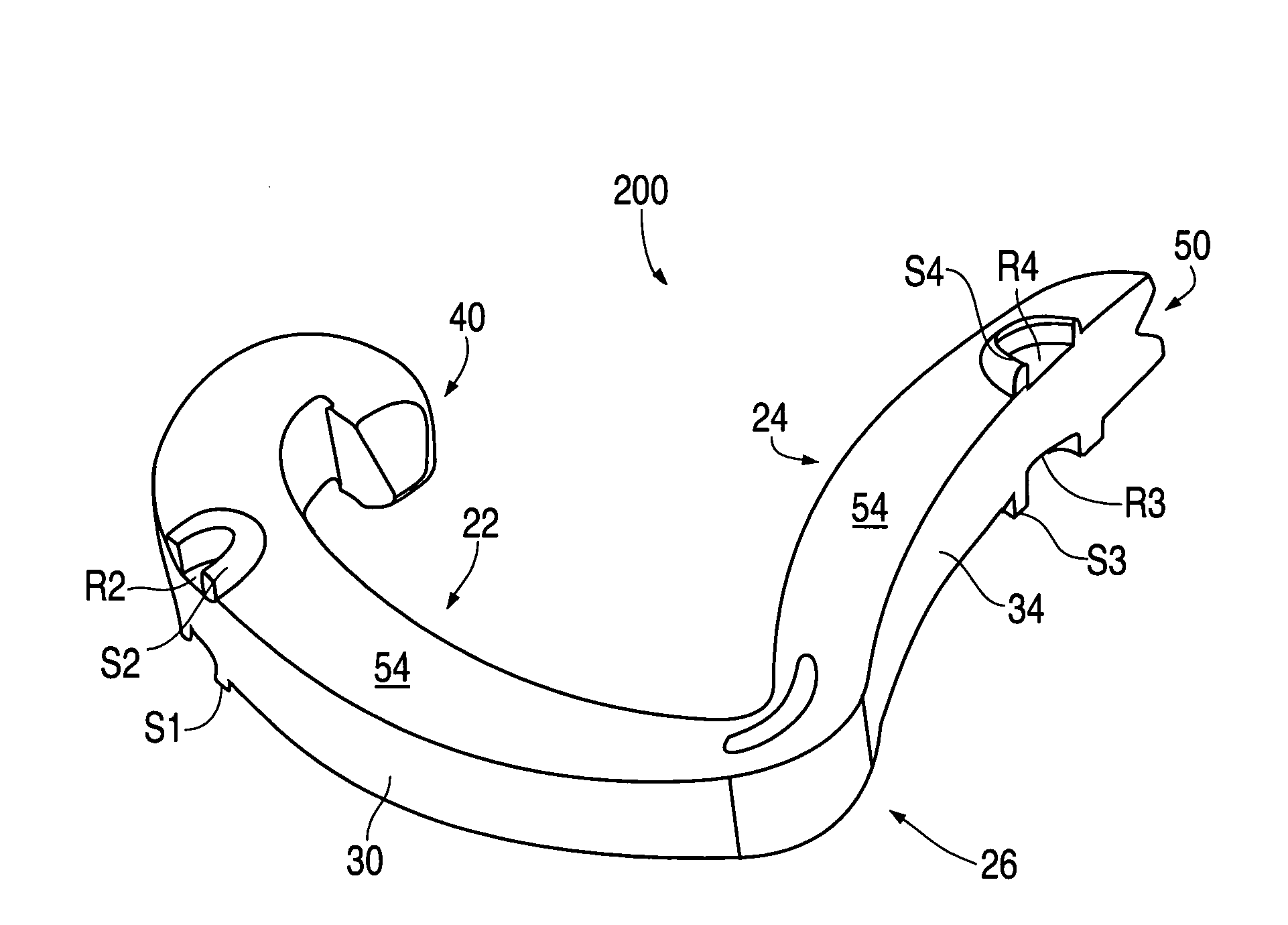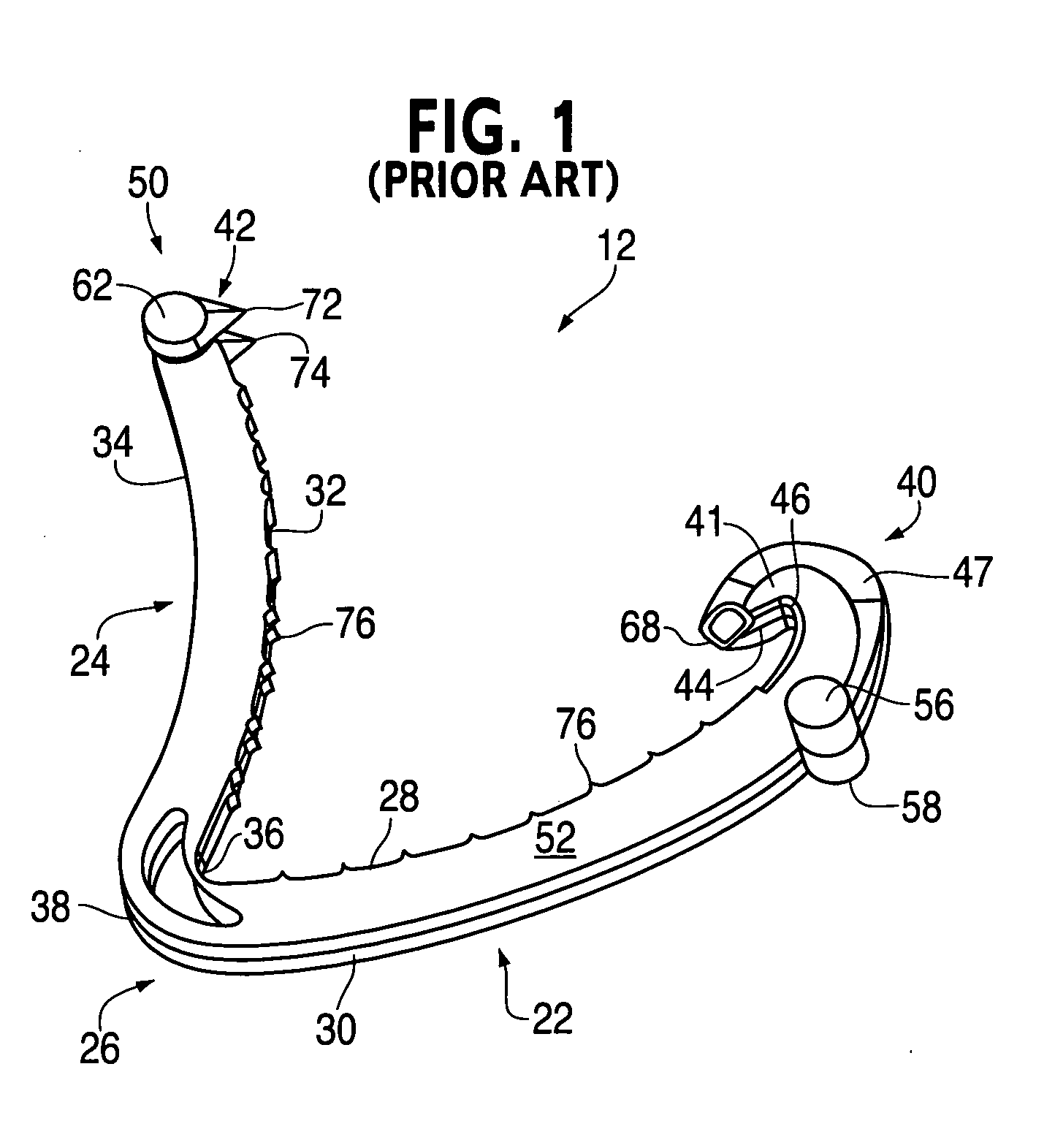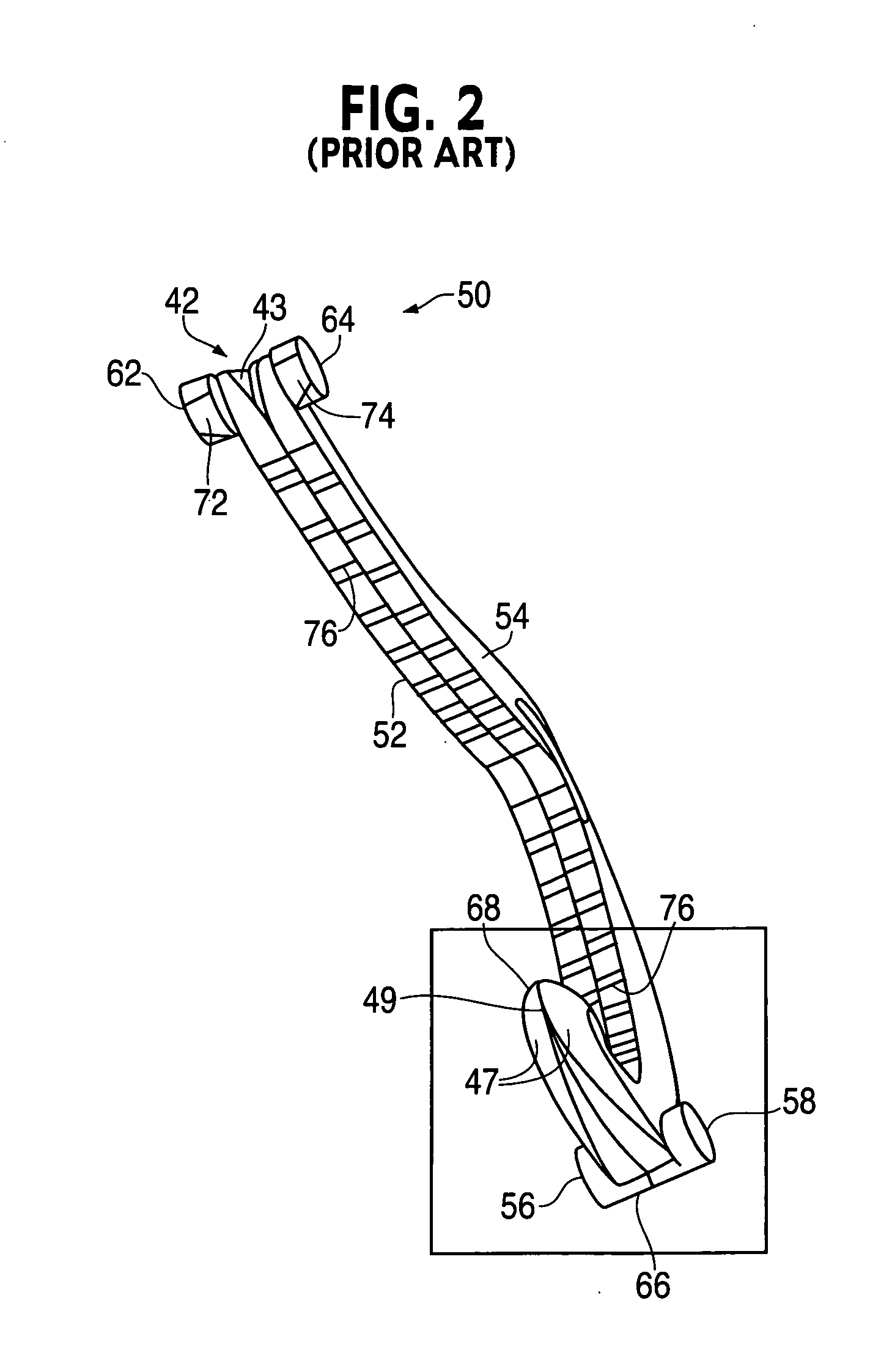Non-snag polymer ligating clip
a polymer and ligating clip technology, applied in the field of surgical clips, can solve the problems of limited space and visibility, time-consuming and difficult to perform complex manipulations of surgical threads for ligation, and requiring complex needle manipulations, etc., to achieve sufficient strength, minimize interference, and high degree of security
- Summary
- Abstract
- Description
- Claims
- Application Information
AI Technical Summary
Benefits of technology
Problems solved by technology
Method used
Image
Examples
Embodiment Construction
[0034]Referring first to FIGS. 1-2 of the drawings, one example is illustrated of a conventional asymmetric surgical clip 12. Clip 12 and others of similar design are particularly useful as hemostatic clips that can be latched around a vessel or other type of tissue to ligate the vessel and thereby stop or reduce the flow of fluid through the vessel. Clip 12 can be constructed from any suitable biocompatible material. However, the presently disclosed subject matter is particularly suitable for practice with polymeric clips. Thus, clip 12 preferably comprises a one-piece integral polymeric body formed from a suitable strong biocompatible engineering plastic such as the type commonly used for surgical implants. Examples include, but are not limited to, acetyl polyoxymethylene (POM), polyethylene terephthalate (PET), polybutylene terephthalate (PBT), polyoxymethylene, or other thermoplastic materials having similar properties that can be injection-molded, extruded or otherwise processe...
PUM
 Login to View More
Login to View More Abstract
Description
Claims
Application Information
 Login to View More
Login to View More - R&D
- Intellectual Property
- Life Sciences
- Materials
- Tech Scout
- Unparalleled Data Quality
- Higher Quality Content
- 60% Fewer Hallucinations
Browse by: Latest US Patents, China's latest patents, Technical Efficacy Thesaurus, Application Domain, Technology Topic, Popular Technical Reports.
© 2025 PatSnap. All rights reserved.Legal|Privacy policy|Modern Slavery Act Transparency Statement|Sitemap|About US| Contact US: help@patsnap.com



